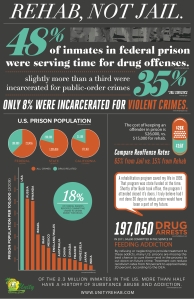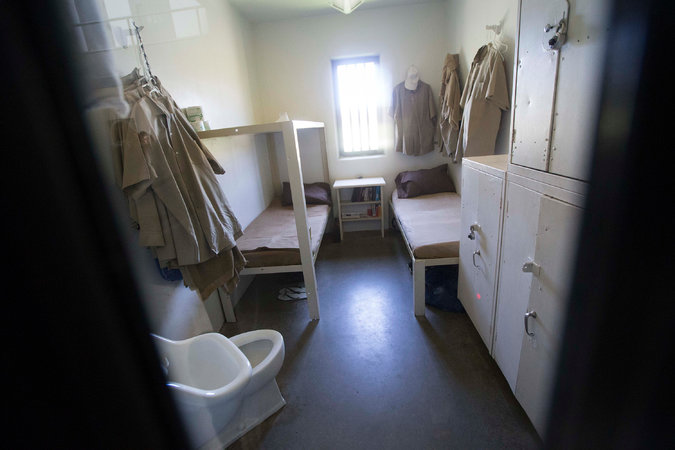It is no secret that the federal prison population has dramatically increased since 1980. The War on Drugs has caused the prison population to plummet to a current 205,792, with over half of the inmates being convicted for drugs. In a recent paper, The National Association of Assistant US Attorneys (NAAUSA) blatantly states, “our federal prison population is not exploding.” They seem to believe that the drop in prisoners between 2013 and 2014 is enough to warrant their claim. However, that slight decrease certainly does not make up for the large increase that preceded it.

This was the first of many other “dangerous myths” they attempted to refute on behalf of their position against sentencing reform. The only problem is that many of their claims lack moral, ethical, and logical support.
Another “myth” they attempt to refute is that “the federal prison population is a product of mandatory minimum sentences for drug traffickers.” They claim that the majority of drug traffickers sentenced in federal court are not being sentenced pursuant to mandatory minimum sentences. However, according to the United States Sentencing Commission, statutes carrying mandatory minimum penalties have increased in number, apply to more offense conduct, require longer terms, and are used more often than they were 20 years ago. In 2010, more than three-quarters (77.4%) of the 19,896 defendants convicted of an offense carrying a mandatory minimum penalty were convicted of a drug trafficking offense.
The NAAUSA says that violent drug dealers aren’t the only ones who deserve lengthy prison sentences. They claim that drug trafficking is inherently violent and that all drug dealing is dangerous taking the lives of thousands of Americans, destroying families, and undermining the moral fabric of our communities, regardless of whether any individual offender engages in an act of violence during the commission of a drug offense. Many communities, particularly those inhabited by minorities, have been torn apart because their fathers and brothers are behind bars. Some of these men were doing what they had to do to feed their families in their poverty stricken environments. The NAAUSA claims that sentencing reform won’t lower our taxes, but the fact of the matter is the United States spends 80 billion dollars per year incarcerating prisoners whom many of which were convicted for non-violent offenses.
In a recent visit to a federal prison to discuss the issues surrounding mass incarceration, Barack Obama said, “Imagine the good we could do, the investments we can make if we did not spend so much money incarcerating non-violent offenders.” He spoke on the case of Bernard Noble, a man sentenced to 13 years and four months for possessing two joints of marijuana. Mr. Noble is a dedicated father of seven who was working full-time and starting a small business at the time of his arrest.
The NAAUSA notes that with the recidivism rates for convicted offenders at nearly 77 percent, according to the Bureau of Justice Statistics, it is highly likely that many of these offenders will revert back to drug dealing once released from prison. This is just another one of many reasons why sentencing reform is necessary. Why are we spending $80 billion a year to house inmates whom many of which have the ability to become productive members of society if given the right treatment?
 source: http://www.dualdiagnosis.org/jail-time-drug-users/
source: http://www.dualdiagnosis.org/jail-time-drug-users/
The NAAUSA argues that the current federal system and the penalties for drug trafficking present the best approach toward equal justice under the law. But as Barack Obama stated in his speech at the 106th Annual NAACP Convention, “In the American tradition and in the immigrant tradition of remaking ourselves, in the Christian tradition that says none of us is without sin and all of us need redemption, justice and redemption go hand in hand.”










